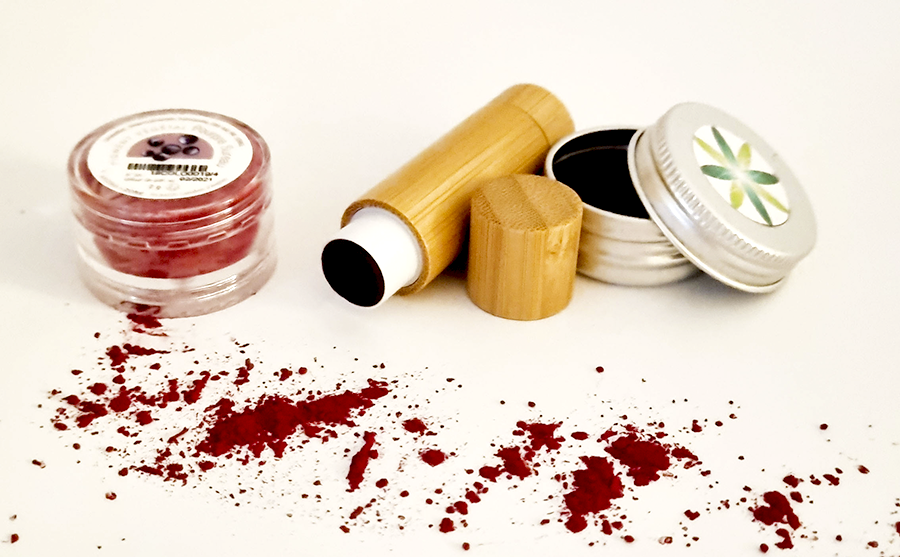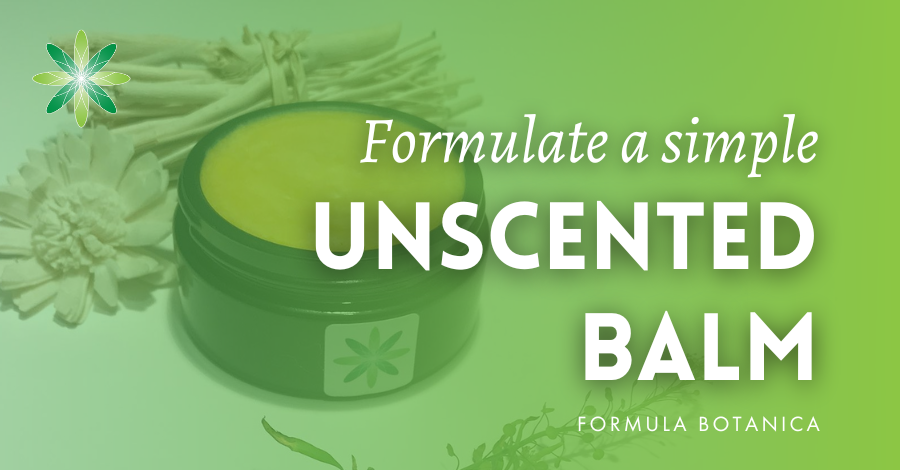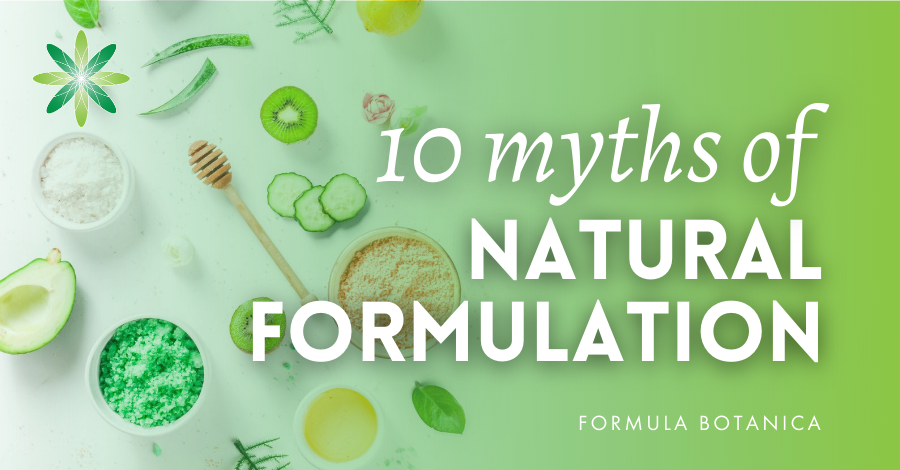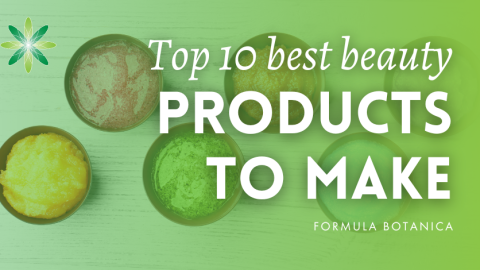Formulate an Amazonian lip balm Formulate an indulgent lip serum Formulate an oat and cranberry body balm Why a balm stick should be the next skincare product you formulate Make a natural cleansing balm
Our lip balm ingredients
Our lips are constantly exposed to the elements and we often forget that they, just like our skin, require some extra attention every so often. We wanted to formulate a vegan lip balm that looked lovely and worked well as an every day essential. It was important for the lip balm to condition and moisturise the lips, restoring their natural suppleness and beauty so our choices of oils and butters reflect this need.
Our formulation: tinted lip balm
Makes: 50g of lip balm base and 25g of tinted lip balm. Time taken: 60 minutes, including setting time for the base. Level: a beginner-level formulation that can be personalised and adapted.| Phase | Ingredients | INCI | Weight (g) |
| A1 | Golden Jojoba oil | Simmondsia chinensis seed oil | 16.00 |
| A2 | Safflower organic oil | Carthamus tinctorius seed oil | 15.70 |
| A3 | Candelilla wax | Euphorbia cerifera cera | 9.00 |
| A4 | Carnauba wax | Copernicia cerifera cera | 4.50 |
| A5 | Illipe butter | Shorea stenoptera seed butter | 4.50 |
| A6 | Vitamin E | Tocopherol, Helianthus annuus seed oil | 0.30 |
| B1 | Pourpre Sureau | Distarch phosphate, Anthocyanins, Citric acid | 2.00 |
| B2 | White Rice CRUSH™ Active Grade | Oryza sativa starch | 1.00 |
| B3 | Meadowfoam Carrier Oil | Limnanthes alba seed oil | 8.00 |
| B4 | Piperita mentha essential oil | Mentha piperita oil | 0.10 |
| C | Lip balm phase | blend 13.9g of A with all B | |
| Total:25.00 |
Method of Manufacture
In this formulation, you make Phase A, the lip balm base first, followed by the colourant phase B. We are then using only a portion – 13.9gms – of the base to blend with all Phase B ingredients. You can use the remaining lip balm uncoloured or experiment with it in combination with other botanical pigments of choice.- Preparation
Disinfect your utensils and working space and wear appropriate lab PPE according to GMP.
- Weighing
Weigh out all your ingredients. You can put all phase A ingredients in one beaker immediately.
- Phase A – lip balm base
Place your beaker with phase A into a water bath and melt at 80°C. Once the base is melted, use a glass rod to blend well. Then, pour it into a container and leave to cool/harden.
- Phase B – pigment phase
Mix phases B1 and B2 in a beaker and blend well with a glass rod. Then add phases B3 and B4 to the blend. Combine entire phase B first using a glass rod and then a hand mixer for 5 minutes.
- Phase C – blending the tinted balm
Measure out 13.90gms of the lip balm base into a beaker and place in a water bath to melt. When the base has melted, slowly mix in the combined phase B with a spatula/glass rod. Once it has all been added and mixed in well, pour into a mould or container and leave to cool/harden.
- Label
Once the balm is cool and set, lid and label with product name, batch number and date.
Suggested suppliers
Aroma-Zone (EU): has a good range of natural pigments. We used their Pourpre sureau which is derived from Elderberry, Sambucus nigra L.FAQs
Our lips have only a very thin layer of skin and do not have sweat glands. Without the skin’s natural oil, sebum, to moisturise them, they can dry out quickly, especially in cold weather and in dry climates. Using a lip balm provides a protective layer to your lips. Made of oils, butters and waxes, lip balms provide an occlusive layer to lock in the skin’s own moisture making it harder for extremes of heat and cold to dry your lips out.
It is challenging to find cosmetic plant pigments for use in natural lipsticks, however there are some that do have good staying power, can be easily removed without long-lasting staining, and when mixed in the right lipstick base, perform as well as synthetic colourants. The main cosmetic plant pigments, which come in powdered form, are: beetroot, purple sweet potato, red radish, curcumin or tumeric, and spirulina. Most can be used singly, but mix them to create a wider colour palette.
Lip balms are easy, DIY cosmetics to make at home. The best ones are made of natural plant oils, butters and waxes in varying percentages depending on how soft or hard you want the balm. They are made by melting all ingredients over a water bath or bain marie starting with the hardest, and highest melting point ingredients – the waxes. Stir the melted anhydrous ingredients gently to blend well, remove from the heat source and pour into jars or lip balm tubes to cool. Place lids on only once the blend is at room temperate. You can add essential oils at no more than 0.1% and only those suitable for safe application to the lips. For a tinted lip balm, use a very small amount of natural powdered plant pigments. Stir them in well when the oil blend is removed from the heat.
Join us at Formula Botanica, where tens of thousands of students and followers take our free and paid online courses to learn how to formulate organic skincare and haircare for themselves or to sell and also how to set up a beauty brand and business.
FREE TRAINING
Learn how to become an
Organic Skincare Formulator
FREE TRAINING
How to become an
Organic Skincare Entrepreneur
FREE TRAINING
How to become an
Organic Skincare Entrepreneur
Leave us a comment

Rouah was a member of the Formula Botanica team between 2020-2022. Rouah is a cosmetic chemist with many years’ experience as a formulator, product and project manager and scientific advisor in the cosmetic industry. Passionate about understanding the science behind raw ingredients, Rouah also has a deep interest in wellbeing, sustainable action, and social influence.



























